Everything You Need to Know About Brooder Temperature for Baby Chicks
Raising chicks in a brooder can be a fun and rewarding experience, but I know at times it can seem overwhelming. Maintaining the proper brooder temperature is one of the most important factors in raising healthy, happy chickens, and when I was first starting out with chickens it was one of the more stressful aspects for brooding chickens. I wanted to make sure I got everything just right!
The best brooder temperature varies depending on the age of the chicks, but generally, the ideal brooder temperature for baby chicks is 95-98 degrees Fahrenheit during their first week. During weeks two through four, you should slowly reduce the temperature by 5 degrees, but how do you manage the temperature and monitor for problems?

I have been raising chickens for over 10 years, and I have brooded baby chicks on my porch every single year. Some of the chicks I hatched from fertile eggs and some mail order chicks from an out of state hatchery.
I have experimented with different heat sources and have found, what I think is the optimal setup for keeping baby chicks comfortable and healthy, and give them the best start, and today I am sharing everything I have learned.
What is Brooding?
Technically, brooding is the period from hatching until supplemental heat is no longer needed. This means the period the chicks need to be kept inside or with a heat lamp, depending on where you live and the outdoor conditions, is between six to eight weeks. Generally speaking, the chicks will need supplemental heat until their feathers grow in, which is around 6 weeks of age. Although, bantams and other smaller chicken breeds, will benefit from the the controlled environment of the brooder longer.
This is a critical time for your chicks. Young birds are growing rapidly and are not yet equipped to handle most outdoor environments. They can’t yet regulate their body temperature as adult chickens do, and they’re most vulnerable to disease, illness, and attacks from other birds in an established flock. Brooding is also when you are most likely to notice abnormalities related to incorrect incubation or genetics.
While I am focusing on the temperature in the brooder today, the other factors that need to be considered when setting up a brooder are:
- Light
- Temperature
- Ventilation
- Humidity
- Bedding
- Feed
- Water
- Health and mortality
Keeping baby chicks warm is essential for their health and well-being. A mother hen usually keeps a freshly hatched chick warm and safe. But we can get baby chicks off to a good start without a broody hen.
Most chicken keepers prefer to brood their chicks in the house, garage, or barn. Those spaces usually give you the most opportunity to finely manage their environment while also being able to keep a close eye on the young flock to monitor for problems.
I have raised several groups of young birds in a makeshift brooder made out of a kiddie pool and chicken wire on my porch and found that maintaining the proper temperature for your brooder isn’t too hard if you know what to watch for and invest in the right equipment.
Know the Optimal Brooder Temperature Based on the Age Of The Baby Chicks
When I am setting up my brooder I always find it helpful to figure out the target temperature I am going for based on the age of the birds. The ideal temperature for a brooder should be 95°F on the first day and then lowered 5°-10°F each week, how to chicks react to the temperature shift will be your gauge on where you actually end up in that range, but I’ll go into further detail about that soon!
The Colorado State University Extension recommends the following temperature ranges based on the weeks of age of young chicks.
- 0 to 1 week 93° to 95°F (33.9° to 35°C)
- 1 to 2 weeks 88° to 90°F (31.1° to 32.2°C)
- 2 to 3 weeks 83° to 85°F (28.3° to 29.4°C)
- 3 to 4 weeks 78° to 80°F (25.6° to 26.7°C)
- 4 to 5 weeks 75°F (23.9°C)
- 5 to 6 weeks 70°F (21.1°C)
- 6 weeks and over Comfort Zone 50° to 70°F (10° to 21.1°C)
Keep an Eye Out For Overheating and Chilled Birds
Using a thermometer is helpful when setting up your brooder or determining whether your heat source is working properly, but I think it is important to let your chicks be your guide and take visual cues from them. Chickens have very limited ways of communicating their discomfort to us, it is essential to pay close attention and observe their body language. You can easily gauge their well being by their behavior if you recognize the signs of distress from your birds’ overheating or cold body temperatures.
You will know you have the ideal temperature in your brooder when the chicks are evenly spread throughout the brooder. Visiting their food and fresh water, and you’ll hear them making contented peeping sounds.
Overheated chicks will likely spread as far away from the heat source as the brooder will allow. They will be pretty silent, pant, and even have drooping heads. If you notice any of these signs, quickly move the chicks away from the heat source and adjust the temperature accordingly.
If the brooder is too cool, chicks will huddle together directly under the heat lamp. They will be noisy and chirping almost frantically, which is a sign of distress. If you use an infrared heat lamp, lower the lamp closer to the brooder floor and/or put in higher-watt bulbs, if you are using a heat plate make sure it is plugged in and functioning properly.
To help you assess and adjust the temperature, it is important to have a thermometer inside the brooder at the chicks level – but their behavior trumps whatever the thermometer is telling you.
Problems Associated with the Wrong Brooder Temperature
The wrong brooder temperature for prolonged periods can cause serious health issues in baby chicks, including early death. If the temperatures are too low, the chilled chicks will grow slower and gain less weight. On the other hand, if it’s too warm, your chicks are at risk of dehydration, overheating, and being unable to digest their food properly.
One of the most common problems caused by incorrect brooder temperatures is “pasty butt”. Pasty butt or is a condition where droppings stick to a chick’s vent area, preventing the excretion of waste. Pasty butt is usually caused by stress, and inadequate brooder temperatures can contribute to a chick developing pasty butt. The condition is easily treated, and recovery can be quick if action is taken promptly.
Heat Supplements For Your Brooder
No matter where you live, you will likely need a heat supplement for your brooder until your chicks are fully feathered. Red heat bulbs, incandescent bulbs, a brooder heating plate are all options that are easily found at farm and feed stores. Technically, they will all provide heat for your brooder, but they are not all created equally.
- Incandescent bulbs– This is a standard light bulb and is usually only used as a supplemental heat source and should not be the only heating element in your brooder. Because they do not provide uniform and consistent heat, these bulbs can lead to hot and cold spots in your brooder.
- Infrared Heat Lamps– These red bulbs can be purchased at your local farm store or feed dealer. Traditionally these are the most used supplemental heat sources for brooders, but they also come with the highest fire risk. The surface temperature of an infrared heat lamp can exceed 400 degrees. These bulbs often have a red color to minimize the amount of light the chicks are exposed to to lessen the distribution of the chicks’ sleep-wake cycles. I’ve found the red color isn’t really affective and the chicks I have brooded until a red bulb don’t seem to have natural sleep wake cycles.
- Brooder Heat Plates– Brooder heat plates are one of the safest and best options for a brooder heat source. These plates provide an even, consistent heat to the brooder floor and are much safer than infrared bulbs. The heat from a heat plate mimics that of a mother hen. These advantages are that there is no fire hazard, it uses less electricity (14 watts vs. 250 watts), and no light source will disrupt the chick’s sleep at night. You can adjust the height of them as the chicks grow. You just want to make sure the room your brooder is in has an ambient temperature of 60 degrees Fahrenheit. If the temperature of the brooder falls below 60 degrees your brooder plate will not provide enough heat for your new hatchlings and another heat source will need to be added.
Keeping the right brooder temperature for your chicks is essential, but not difficult. Just remember that the recommended temperatures are 95°F on the first day, and then lowered 5°-10°F each week. Watching the birds body language for signs of distress or discomfort will help you avoid any health issues and pasty butt.
And when it comes to heat sources Incandescent bulbs aren’t recommended because they lack of uniformity and consistency. Infrared Heat Lamps that are commonly found at farm stores or feed dealers come with the highest fire risk and cost to run. Brooder Heat Plates are the best heat source for a brooder, since there is no fire hazard and uses less electricity than a heat lamp bulb while providing warmth similar to that of a mother hen’s body heat. Just keep in mind when shopping for a Heat Plate that it will fit the amount of chicks you are intending to brood, so all chicks have access to it and the brooder will need to be in a location that has an ambient temperature of 60°F
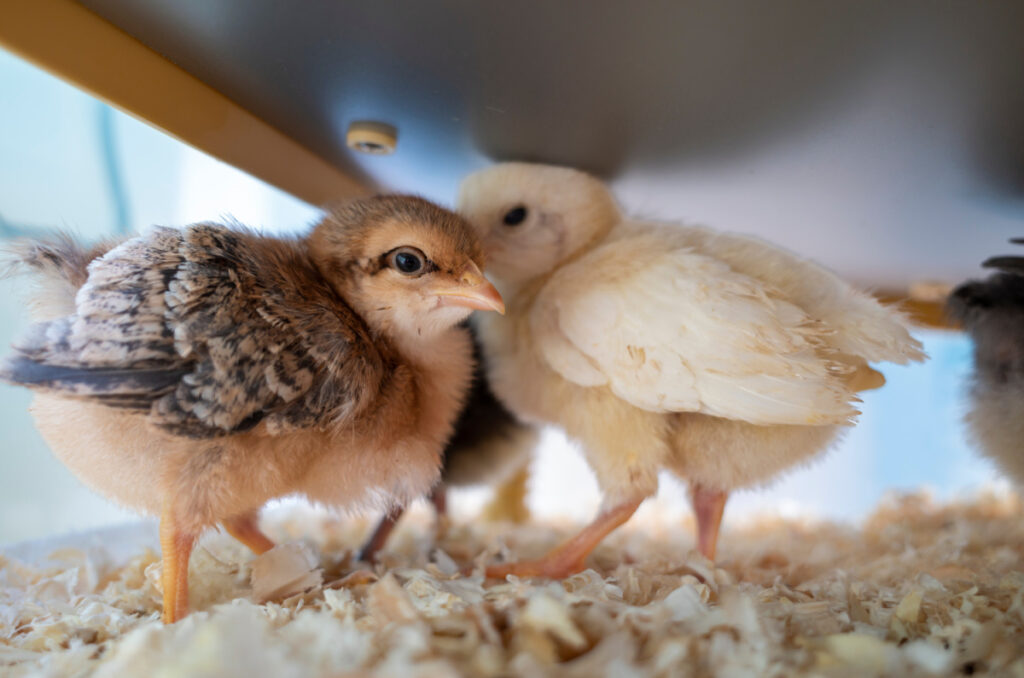
I hope this post will help you create an ideal environment for baby chicks, and as always, if you have any questions, feel free to contact me and I will do my best to help you or point you in the right direction.
Brooder Temperature FAQS
What is the ideal brooder temperature for chicks?
The ideal brooder temperature for baby chicks is 95-98 degrees Fahrenheit during their first week. During weeks two through four, you should slowly reduce the temperature by 5 degrees, until the birds are fully feathered.
What are some signs that my chicks are too hot in the brooder?
Chicks that are too warm move away from the heat and spend less time eating. They pant and try to get away from the heat source by spending time on the brooder’s outer edges.
What are some signs that my chicks are too cold?
Young chicks that are chilled will huddle as close as possible to the heat source. They will also be noisy and chirping almost frantically.


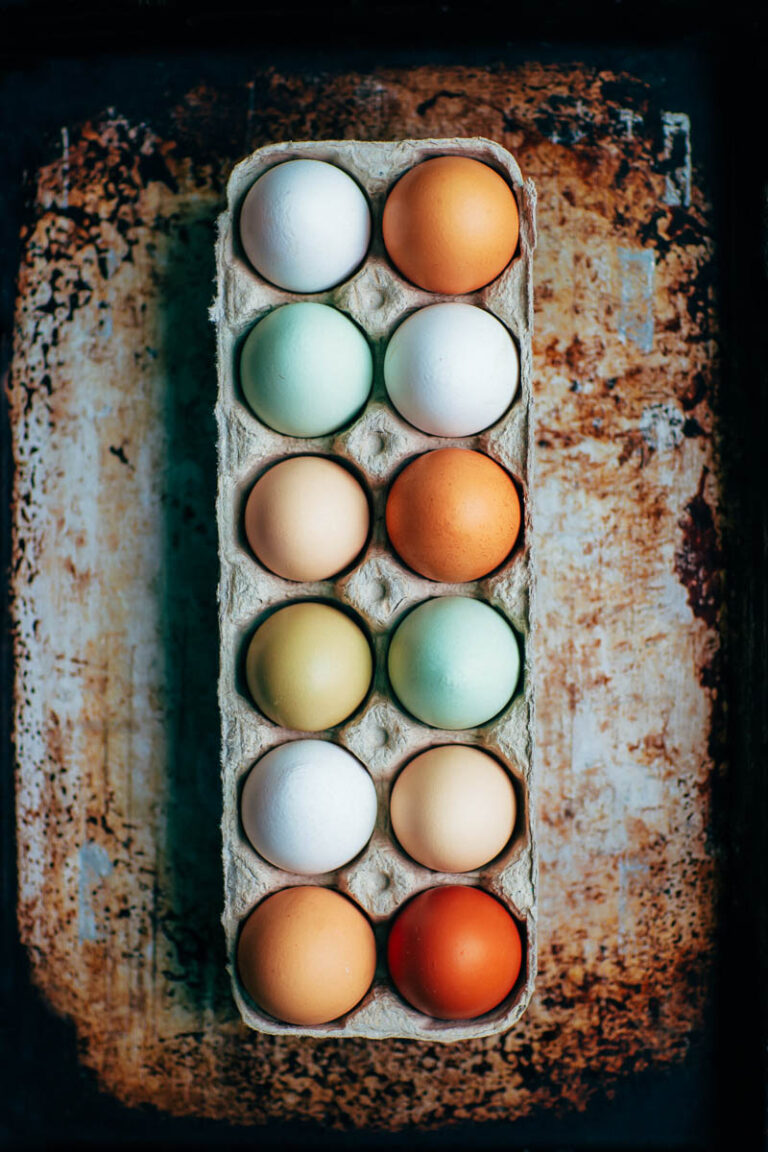

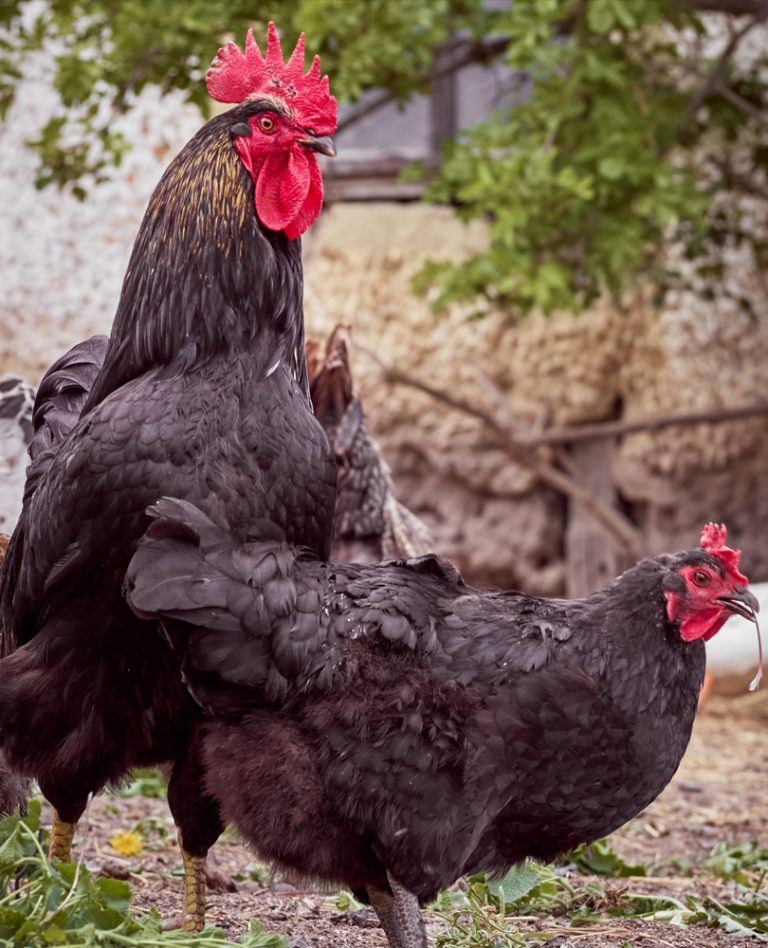
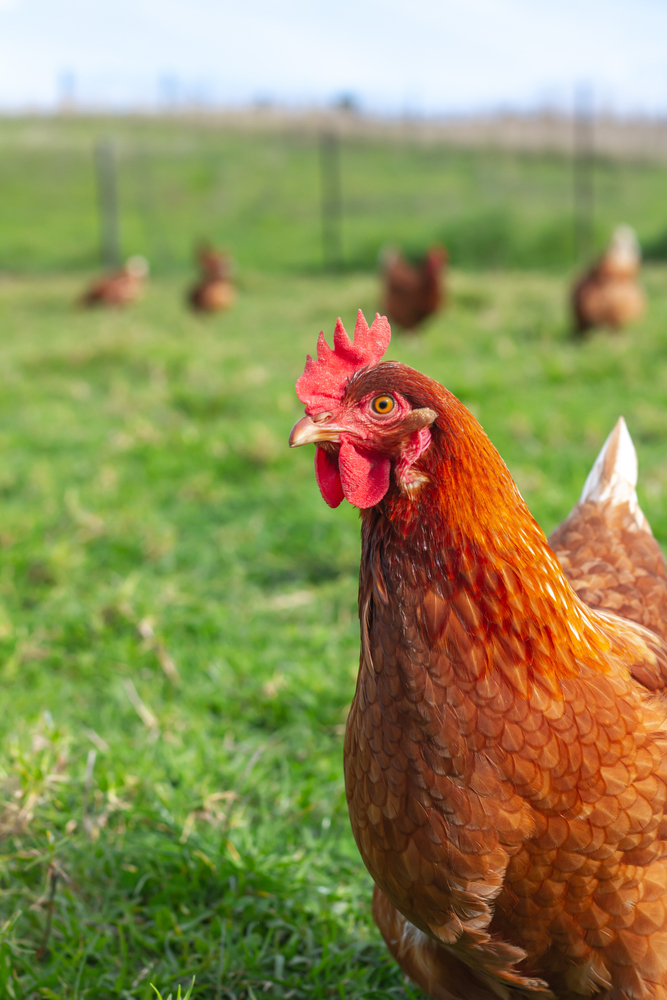
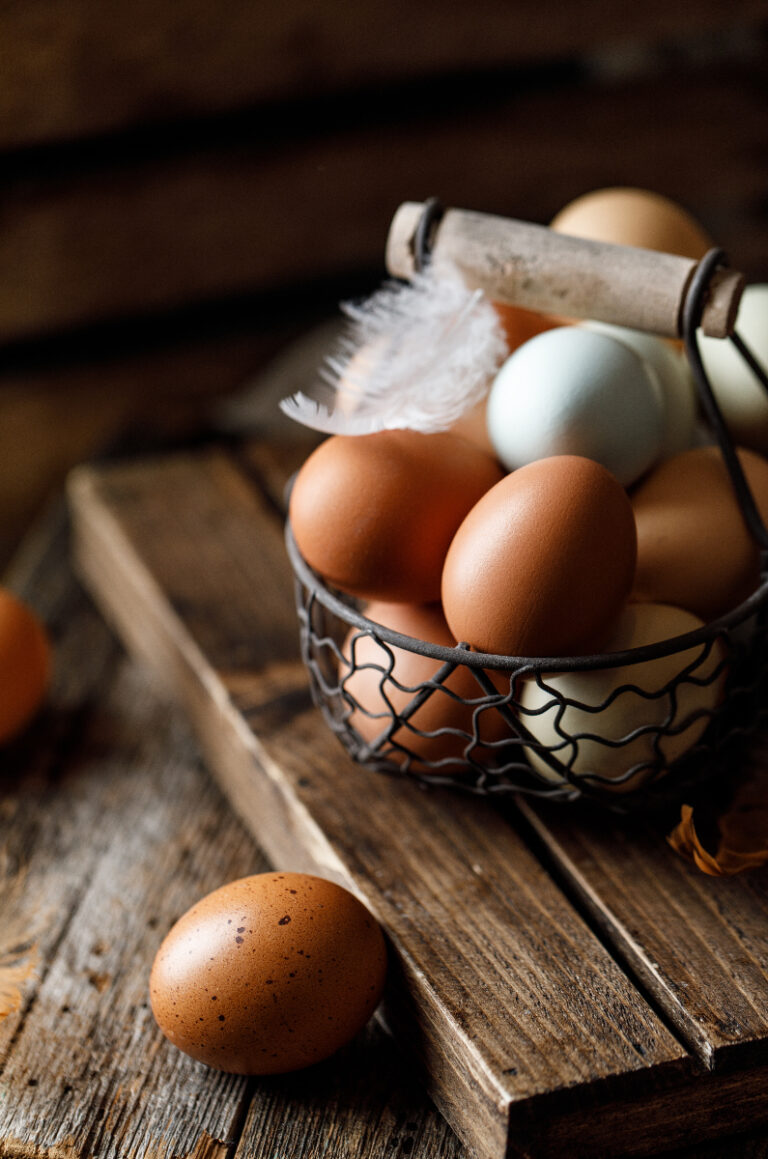

I just got my 4 Rhode Island Reds. I have them in a 4’x 2’ tote with a Brooder I got from TRS I have them inside house & they are huddled up to the Brooder & haven’t seen them eat, drink & they are very quite. Needless to say I’m worried. I’m gonna lay the Brooder down so they can stay underneath it & hope they start to move a round. What else can I do so they’ll feel warm & safe to eat?
@Wendy, did you show them the food and dip their beaks IN the water? Hope it worked out for you RIR = great choice! Cindy